In today’s fast-paced and ever-changing business environment, organisations need to be managing multiple projects simultaneously while ensuring alignment with both immediate and wider strategic goals. Project Portfolio Management (PPM) tools provide a structured framework for optimising resources, improving efficiency, and driving business success.
Here are seven key benefits of using PPM tools to enhance your project management capabilities.
A fundamental benefit is having a well-designed dashboard that consolidates project data into a single, easy-to-navigate interface, offering a snapshot of key performance indicators (KPIs), project health, timelines, budgets, and resource allocation. Having real-time visibility enables project managers and executives to assess project status quickly, identify bottlenecks, and make informed decisions.
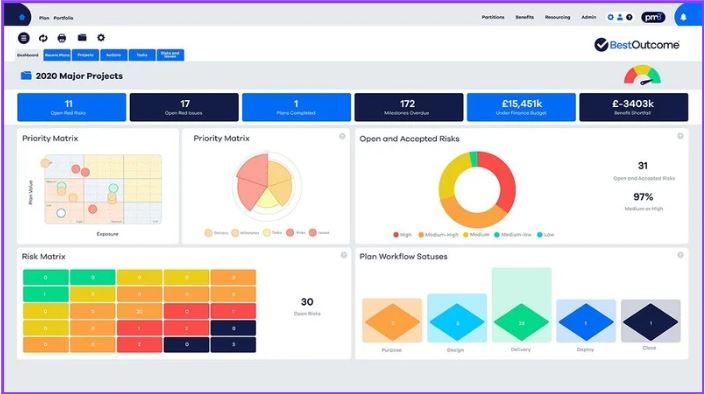
A centralised dashboard greatly reduces the need for manual reporting by automating data collection from multiple sources, ensuring accuracy and consistency. It facilitates proactive risk management by highlighting deviations from planned objectives and enabling corrective actions before issues escalate.
By integrating various data points, the dashboard enhances transparency and accountability within project teams, fostering collaboration and ensuring that stakeholders remain aligned with organisational priorities. Customisable views and drill-down capabilities allow users to focus on specific project details, ensuring better oversight and improved governance across the project portfolio.
Power BI plays a crucial role in unlocking deeper insights through granular-level reporting.
By implementing a PPM solution with a direct integration with Power BI, organisations will be able to analyse project performance in greater depth and generate actionable insights.
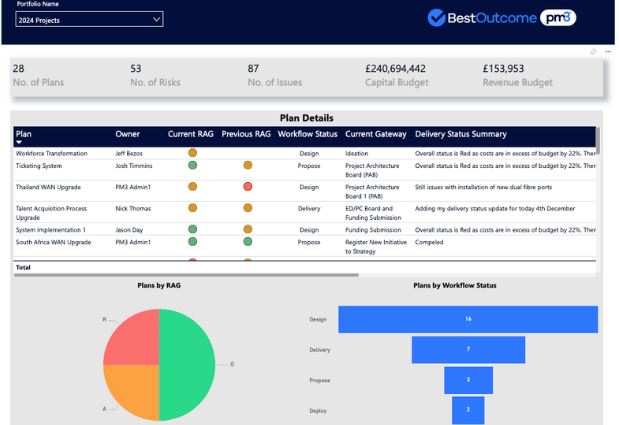
Advanced reporting capabilities allow teams to visualise project data, track trends, and forecast potential issues before they escalate. By leveraging Power BI’s deep analytical capabilities, organisations can improve efficiency, drive strategic decisions, and enhance overall project success.
Gantt charts are essential for managing project timelines, dependencies, and deliverables effectively. Teams that can plan, adjust, and communicate project schedules efficiently will maximise the opportunity for every team member to be aligned with project milestones and deadlines, reducing confusion and delays. The ability to visualise the entire project timeline allows organisations to manage dependencies more effectively, preventing bottlenecks and ensuring that resources are allocated appropriately.
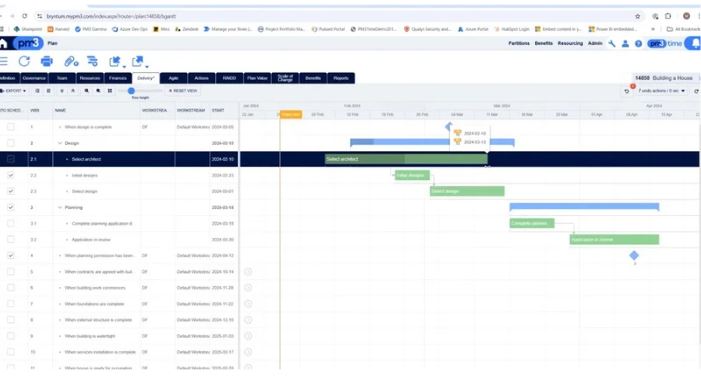
Having an easy to use and effective Gantt capability helps in scenario planning by allowing project managers to simulate different scheduling strategies, making it easier to adapt to unforeseen circumstances and improve overall project agility. By integrating real-time updates, project teams can maintain better control over project progress, leading to increased efficiency and on-time project delivery.
For organisations that follow Agile methodologies, PPM tools often include Kanban boards to streamline workflow management. Kanban boards help teams visualise task progress, identify bottlenecks, and prioritise work effectively. This enhances productivity by ensuring a smooth flow of tasks from initiation to completion.
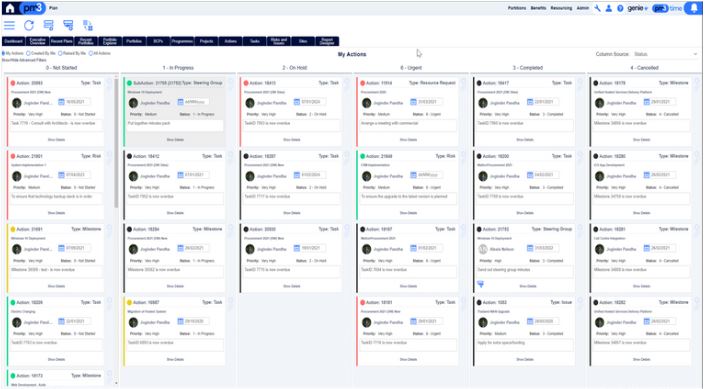
Kanban boards help teams visualise task progress, identify bottlenecks, and prioritise work effectively. This enhances productivity by ensuring a smooth flow of tasks from initiation to completion. By improving visibility and collaboration, Kanban boards enhance project execution speed and efficiency, ultimately driving better project outcomes.
Effective resource management is crucial for balancing workload distribution and maximising efficiency.
Leveraging this capability within a PPM solution will enable organisations to allocate resources based on skill sets, availability, and project requirements, ensuring that team members are neither overburdened nor underutilised. By optimising resource utilisation, businesses can increase productivity and reduce operational costs.
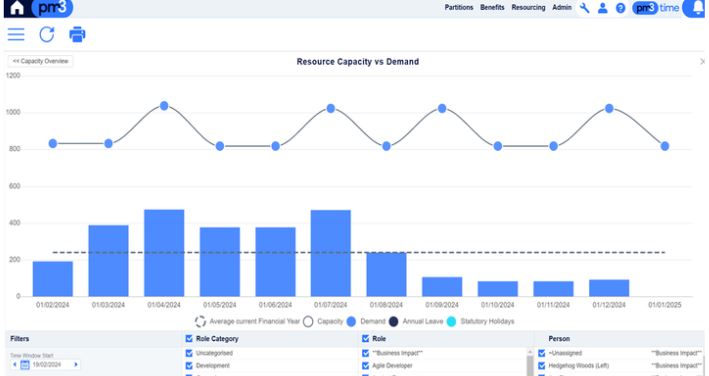
A PPM solution with also enhance visibility into resource availability across multiple projects, helping organisations prevent conflicts and maintain optimal efficiency. By ensuring the right resources are assigned to the right projects at the right time, businesses can enhance overall project performance and ROI.
PPM tools enable organisations to prioritise projects based on strategic objectives, resource availability, risks, and potential ROI. By implementing a structured portfolio prioritisation process, businesses can focus efforts on high-value initiatives that drive the most significant impact, ensuring optimal use of resources and investment.
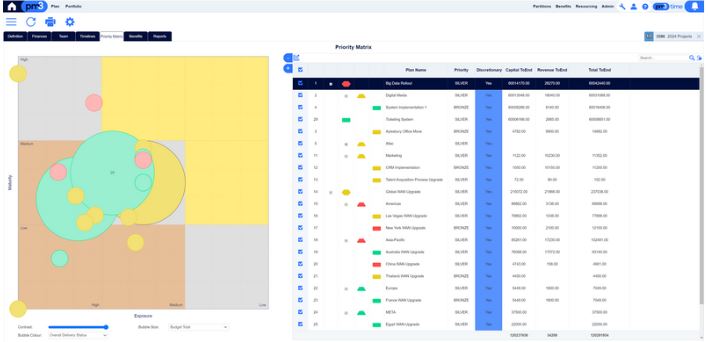
A well-prioritised project portfolio improves alignment between corporate goals and project execution, enabling organisations to respond quickly to market changes, reduce waste, and increase profitability. By focusing on projects that deliver the highest return on investment, companies can maximise business value while maintaining operational efficiency.
A Learning Management System (LMS) within PPM tools helps organisations upskill employees and improve project execution capabilities. By providing training modules, certifications, and knowledge-sharing platforms, organisations can enhance team competency, reduce knowledge gaps, and foster a culture of continuous improvement.
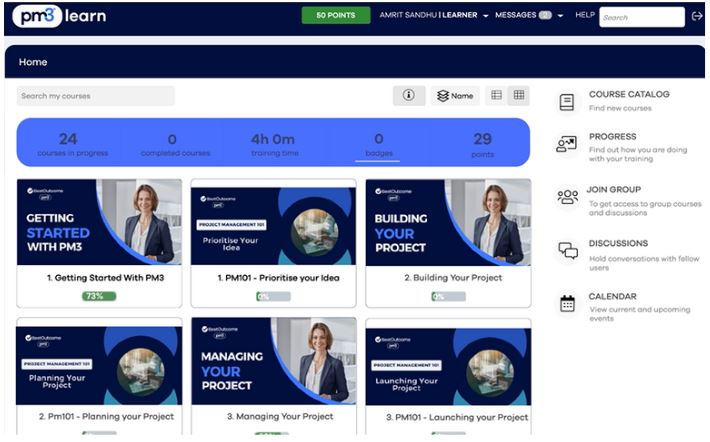
Integrating an LMS with PPM tools ensures that project teams stay up to date with best practices, compliance requirements, and evolving methodologies. It also supports onboarding for new employees, helping them quickly adapt to project workflows and organisational processes. By continuously enhancing team capabilities, organisations can drive innovation, improve efficiency, and maintain a competitive edge.
A properly implemented and utilised PPM tool is a strategic enabler for businesses by providing real-time insights, improving scheduling efficiency, fostering Agile workflows, optimising resource allocation, and ensuring projects align with overall business priorities. By leveraging centralised dashboards, advanced analytics, interactive Gantt charts, and Agile management methodologies, organisations can increase operational efficiency, reduce risks, and drive better project outcomes.
Furthermore, by integrating resource management capabilities, learning management systems, and portfolio prioritisation strategies, PPM tools empower organisations to make more informed decisions, maximise ROI, and ensure that high-value projects receive the necessary focus. These tools not only enhance day-to-day project execution but also contribute to long-term business resilience, agility, and competitive advantage.
Ultimately, adopting a PPM tool is a transformative step towards streamlining operations, ensuring projects are strategically aligned, and driving sustained business success in an increasingly complex and dynamic business landscape.

Our products help you deliver successful change programmes and projects by always focusing on the overall business outcomes. Find out how our products can help you.
Discover PM3 Request a DemoIn this blog, we will look at the merits of using waterfall or alternatively agile....
Read more >